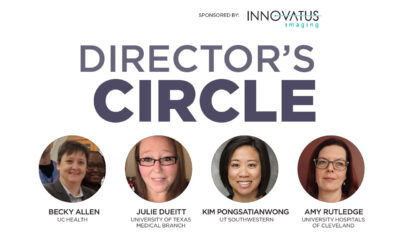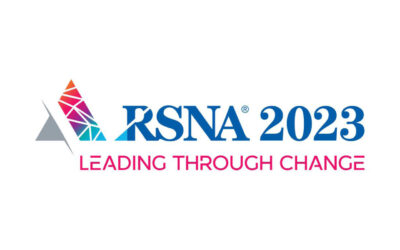
By Kelly Pray
 Cutting edge. Transformation. Innovation. The next best thing. In this new era of technology and entrepreneurship, organizations have begun to synonymize disruption with success. Be careful in your leadership and management of initiatives, that you do not lose sight of the infrastructure required to enable this success to happen.
Cutting edge. Transformation. Innovation. The next best thing. In this new era of technology and entrepreneurship, organizations have begun to synonymize disruption with success. Be careful in your leadership and management of initiatives, that you do not lose sight of the infrastructure required to enable this success to happen.
With a background in lean six sigma methodology, my most frustrating moments at work are when my efforts produce waste. This is not to say the quality of the product is poor – this is referring to waste inclusive of duplication, waiting time, unnecessary processing or mis-utilizing my team’s talent. Ever heard of the phrase, “operating at the top of license?” When we fail to provide the systems and processes in place for teams to succeed, we can often underutilize our employees’ skills, talent and knowledge. So, when we use words like “infrastructure” or “systems and processes,” what does this look like in execution?
One of the ways to combat mis-utilization of talent is to have clear and distinct roles when pursuing an initiative. An easy-to-use system is a “RACI” chart, standing for Responsible, Accountable, Consulted and Informed. By clearly identifying the roles of everyone on an initiative, you can avoid mis-utilization of talent as well as ensure the job gets done. Remember that just as when everything is a priority, nothing is, so too when everyone is accountable, no one is.
Project roles that enable success of innovation include the project manager, operational owner, subject matter expert, performance improvement consult and change manager. Before diving deeper, keep in mind that you don’t need to have separate individuals for each individual role. Similarly, these roles do not have to be held by one individual person.
The project manager or project management team applies a structured approach to lead decisions for designing, developing and delivering the project objective. They manage the process of the innovation. In a sense, the project manager is accountable for the overall success of the project initiative. Project managers ensure work is delivered on time and in the budget to drive results and outcomes. They create customized and scaled approaches to align project objectives with overall organizational strategy. Additionally, project managers ensure that senior leadership is kept informed of project milestones. While project managers are not responsible for executing the work, they ensure the accountability of the project team to deliver results.
The operational owner is responsible for the ongoing process or operation that is being changed due to the proposed innovation or initiative. The operational owners are often direct managers or supervisors, and act as the liaison between the project team and end-user or front line staff. Operational owners and direct supervisors equip their teams to succeed on the overall success of the design, development and delivery of project initiatives.
Subject matter experts (commonly referred to as SME) are responsible for equipping the project team with operational guidance and multidisciplinary lenses. SME are key stakeholders whose expertise or input is required to ensure successful delivery of project objectives. SME are often consulted to come up with the best possible solution for the project. The role of the operational owner can oftentimes be combined with the SME on smaller project teams.
The performance improvement resource or team helps ensure that workstreams are streamlined and waste is reduced. They are consulted to leverage methods and problem-solving tools to improve all aspects of the innovation process. Often, the project manager can hold the role of the performance improvement resource, gathered that the project manager uses data, lean and/or six sigma knowledge to investigate and drive the change.
The change manager or change management team helps apply a structured approach to enable others to address the personal impacts of the change. This role works with the project team to ensure impacted end users are prepared for and adopt the change. Similar to the performance improvement resource, the project manager can integrate change management into their project plans.
All of these roles encompass what it takes to have a successful project team. These roles help enable the innovation to happen. They do more of their work behind the scenes and are key sources of information and direction for leadership. This infrastructure supports the ability for you as a leader to prioritize workstreams. Prioritization is much easier to manage with data such as timeline, budget, scope and impact to the organization provided by the project team.
As leaders, we are accountable for making the decisions to ensure adequate resources, scope and timelines support project results and outcomes. With the data provided by project teams, leaders must validate strategic alignment to ensure project objectives are tied to organizational benefits. In addition, leaders must actively and visibly participate in the initiative. Without properly supporting the initiative, those who are responsible for executing the work may view the effort as “innovation for innovation’s sake,” versus an organizational priority. By being attentive and visible for project milestones, employees will be empowered to support the initiative. Additionally, leaders should build support networks of other key leaders to disseminate the backing of the project. Lastly, leaders should be communicating directly to impacted teams throughout the project to ensure the organization is adequately prepared for the change.
Long-term success is contingent on the rigor of managing the infrastructure behind the innovation. Without dedicated roles in project delivery and prioritization of the efforts they produce, innovation can have a detrimental effect on organizational success and culture. Without proper management of ideation, organizations are left with vision without the strategy. This may result in effort without execution, initiative fatigue or work that is either duplicative or combative to other projects at the organization.
Kelly Pray is the Enterprise Change Management Lead at Children’s Hospital Los Angeles.








